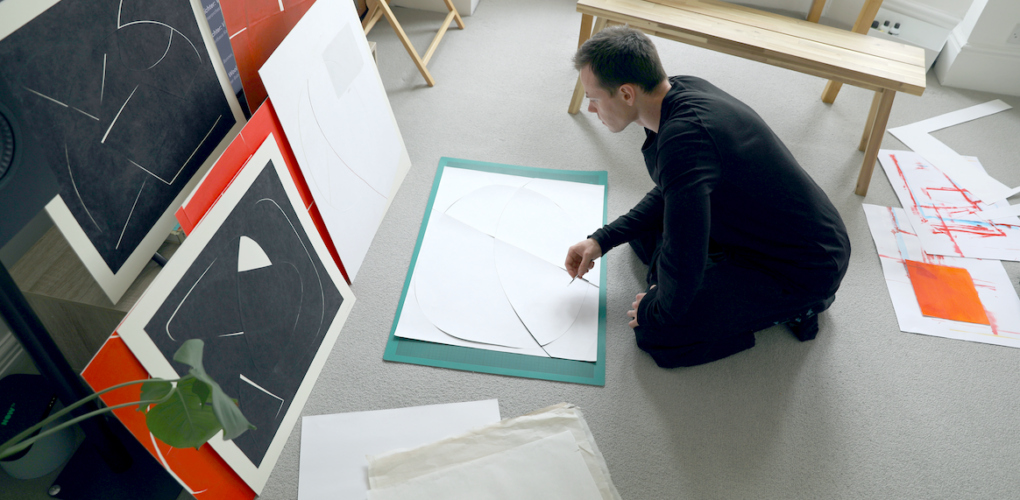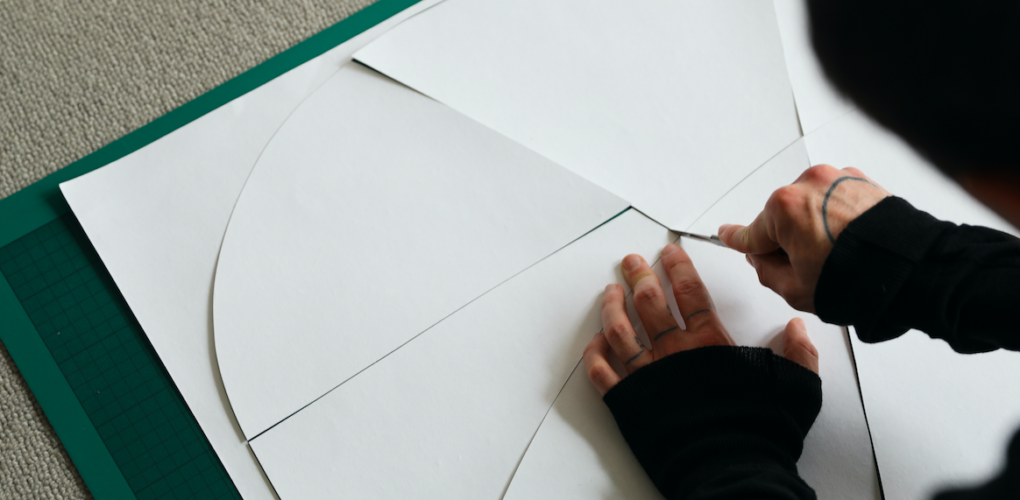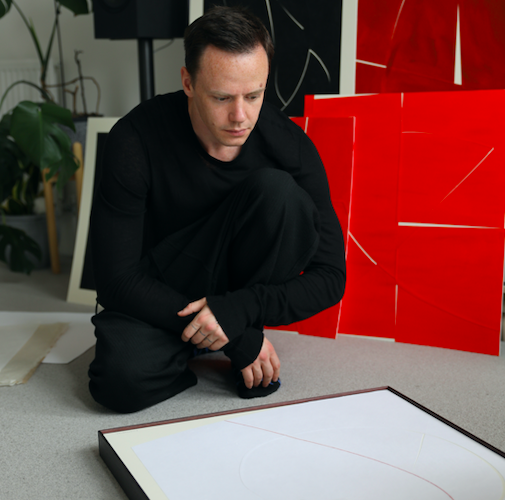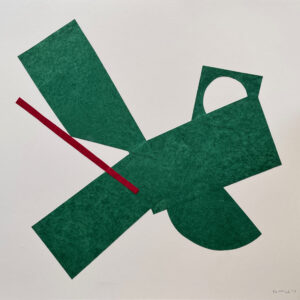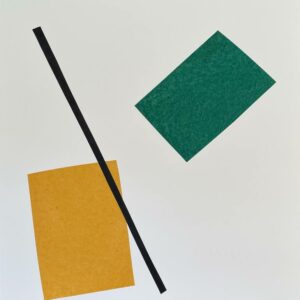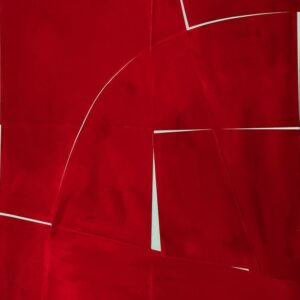One to Watch
 Nikolajs Klimovs’s Meditative Practice and the Art of Letting Go
Nikolajs Klimovs’s Meditative Practice and the Art of Letting Go
Nikolajs Klimovs’s work expresses cognitive, spatial, and color interplay in an abstract form. The choice of paper medium is deliberate, an exercise in relinquishing ingrained anxieties brought on by perfectionism and the drive for control, with shapes cut free-hand and fixed all at once, using no markings or rearrangements. Nikolajs graduated from the London College of Fashion with a BA in fashion design technology. Born in Latvia to Russian parents, the artist moved to London in 2004, where he now lives and works. After graduating, he started a career in luxury fashion that spans over a decade. His most recent series, Free and Fragments, addresses overcoming mental health challenges through subtle abstract expressionist forms.
Tell us about who you are and what you do. What’s your background?
My name is Nikolajs, and I’ve been working in the fashion industry for a very long time now, having finished London College of Fashion as a menswear designer. I like to have several other projects that I do outside of my work, of which art became a very important one, and the most personal.
What does your work aim to say? What are the major themes you pursue in your work? Can you share an example of a work that demonstrates this?
I’ve started experimenting with the current medium during the lockdown, which also allowed me time to reflect on my journey in life so far, personal struggles, and the emotional environment around me from the people closest to me, to society in general. The non-objective expression of that experience is what my art practice attempts to convey. Most of my work deals with anxiety and letting go, moments of feeling broken, and ideas of dealing with these challenges on your own, isolated.
Can you walk us through your process for creating a work from beginning to end?
I begin by sitting down for a bit to breathe, focus, and relax. I’ll put on some contemporary piano or minimal electronic music, and make a cup of coffee. First comes the paper selection – colour, texture, opacity, and density all play a role in what paper gets used. I will then cut the paper with a scalpel, freehand, and guided just by the state of my mind on the day. This is an important part of the process and allows, as well as challenges, me to let go of the need to control the outcome in all other parts of my life. I place and layer all elements on the board freehand as well, for the same reason. After the paper part is complete and dry, sometimes there are additional acrylic or pencil elements that accentuate the piece.
Who are your biggest influences, and why?
My absolute favourites are Kazimir Malevich for bringing a pioneering square-shaped conclusion to abstract art, and Mark Rothko for doing the same for abstract expressionism. They have a perfect symbiotic relationship in my head where the culmination of their influence resulted in the way I experience art today.
How does your work comment on current social and political issues?
While no pieces are outwardly political, the struggles with mental pressures, isolation, overwhelming anxiety, and pressure to control and predict the outcomes are universal and especially acute today, where we are hyper-aware of these issues, yet also live in an environment that can easily exacerbate them. Economic challenges, social media over-exposure, political polarisation, societal change, generational divide, post-truth, and challenges of globalisation – all following around us via 24-hour news cycles, Twitter notifications, and streaming platforms – I’m just happy to find a moment of respite to reflect on it all, learn, grow, and let go.
How do you hope viewers respond to your works? What do you want them to feel?
I just want them to feel. I’ve had someone enjoy and comment on the paper textures and the calmness of the composition. I had someone else say they understand my themes better after having an incredibly difficult and intimate conversation on a non-related subject. The viewers’ reaction will likely depend on the experience they’ve had with the subject, and their relationship with it will determine the level on which they could relate to my work. At the same time, a purely abstract subjective reaction to the balance and physicality of it is just as valuable, as it comes from a place that is non-verbal, perhaps, but no less emotional.
Love reading about all things art? You can have articles from Canvas, curated collections, and stories about emerging artists delivered straight to your inbox. Sign up for the Saatchi Art Newsletter.
